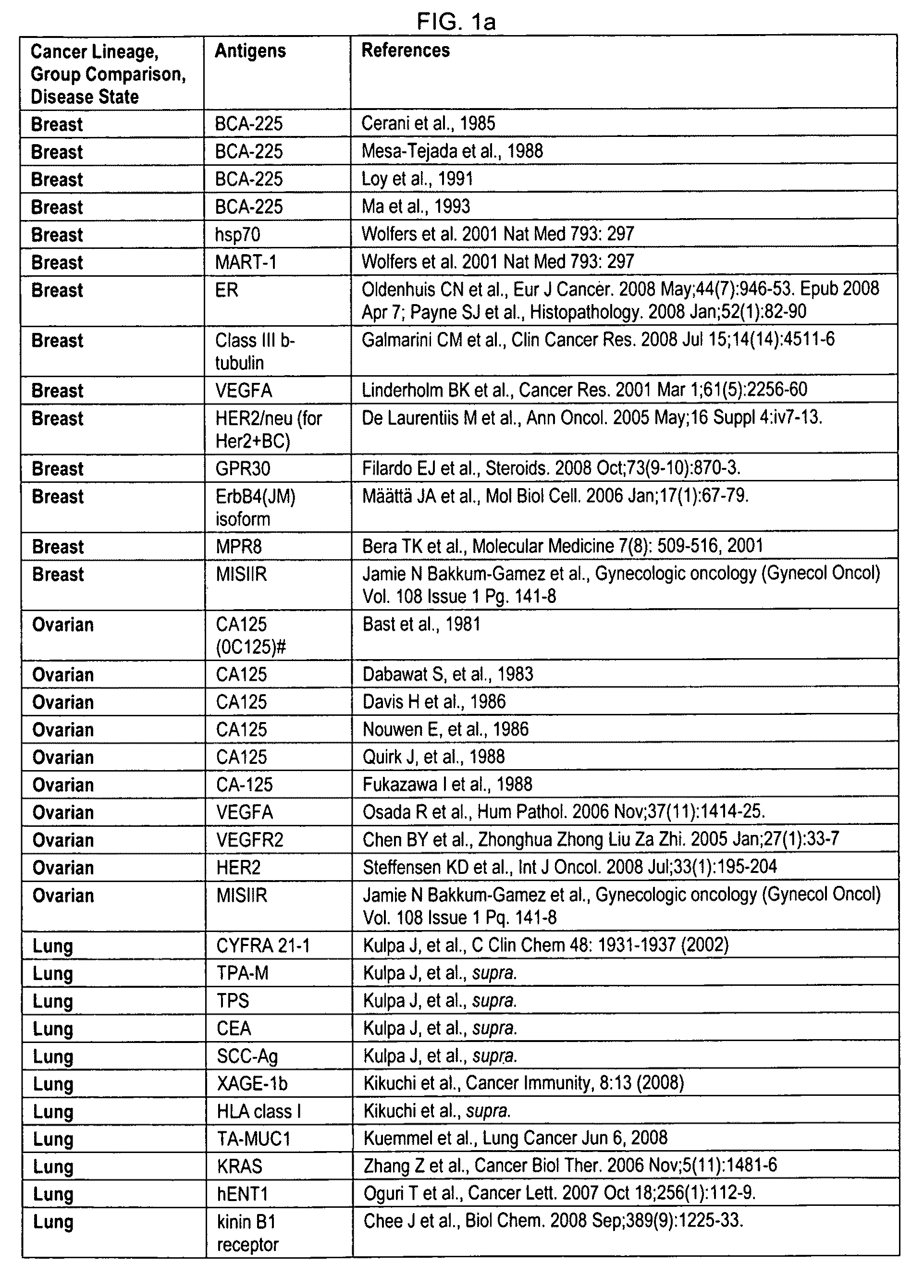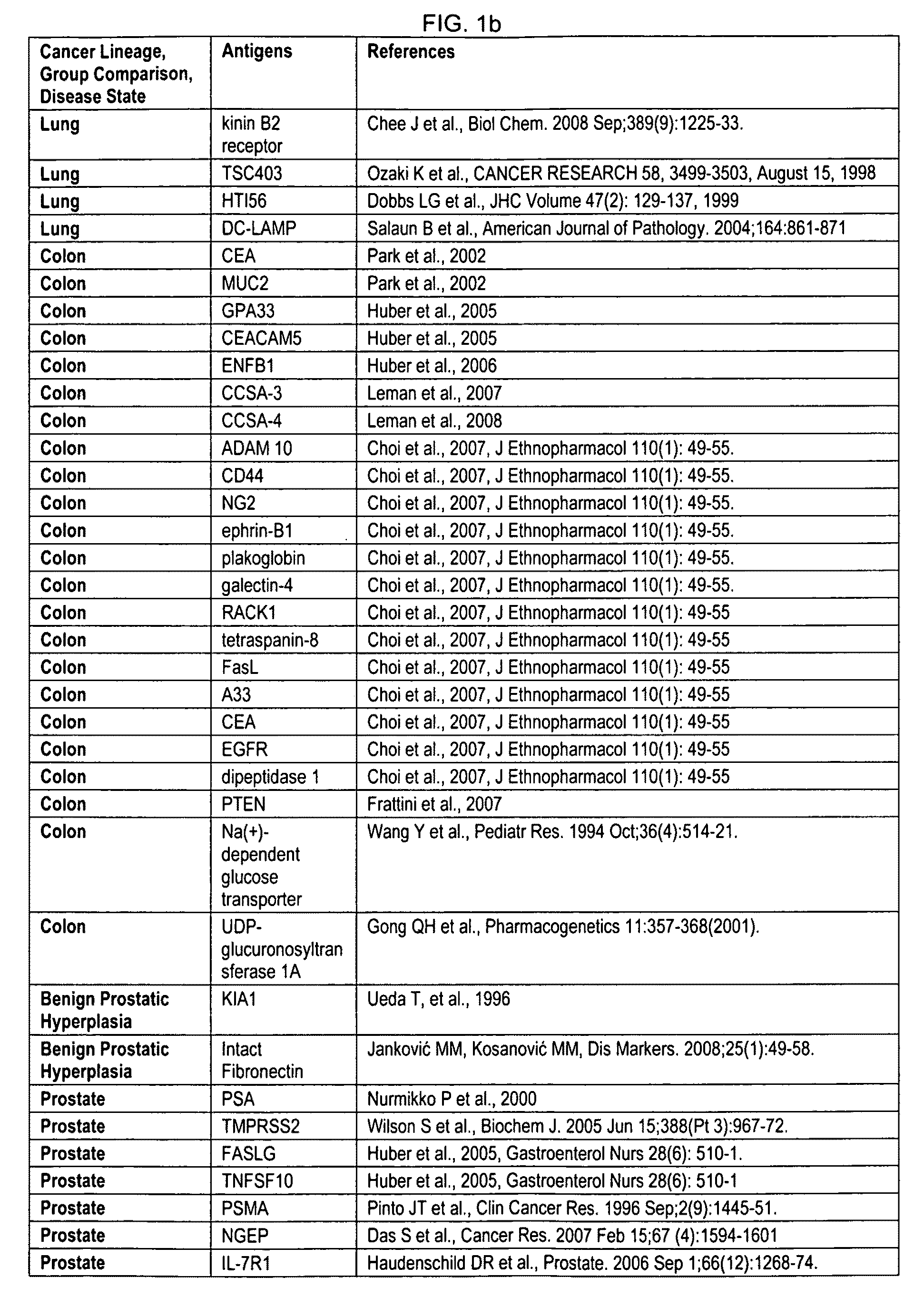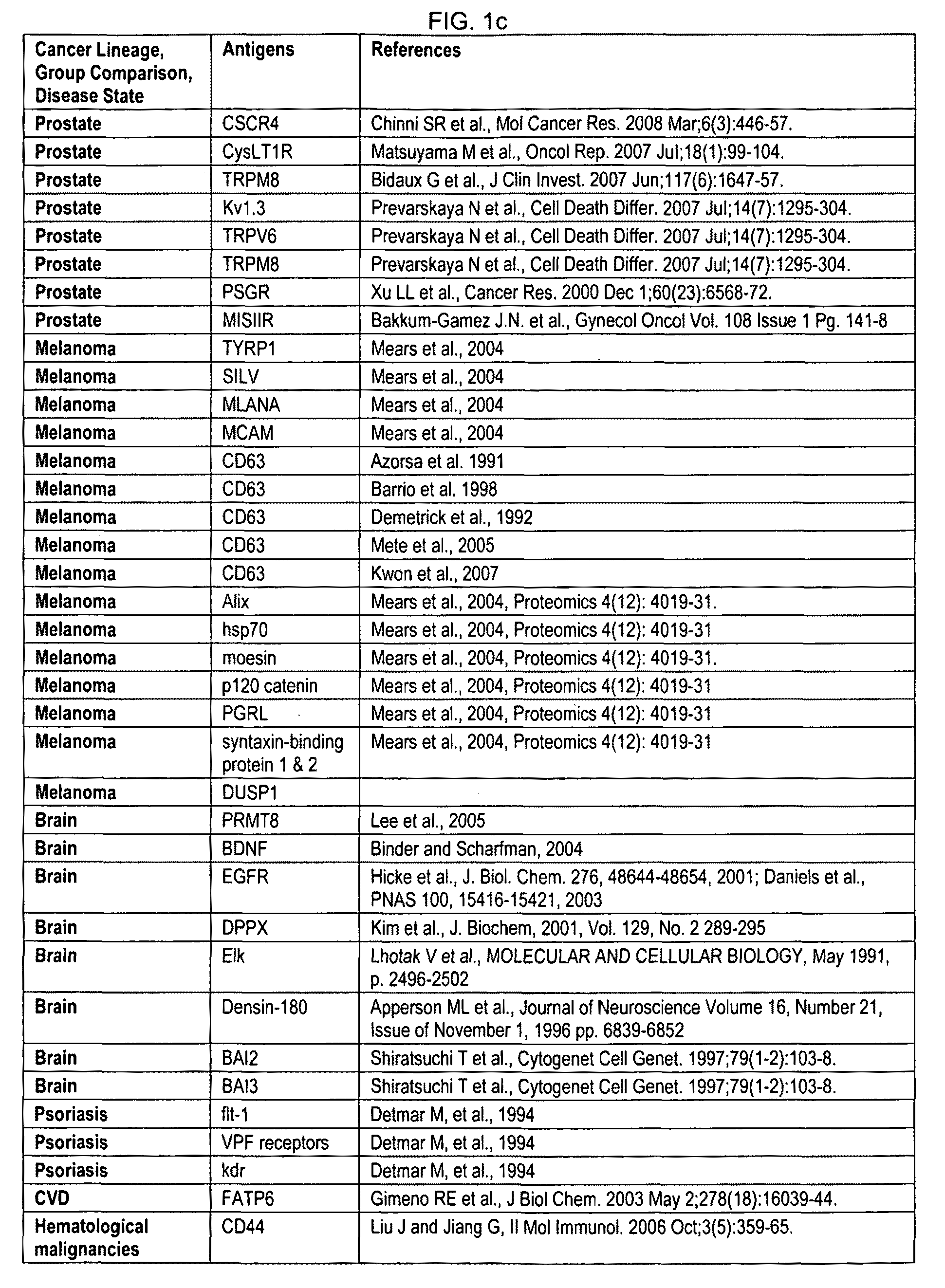Methods and systems of using exosomes for determining phenotypes
a technology of exosomes and phenotypes, applied in the field of methods and systems of using exosomes for determining phenotypes, can solve the problems of invasive methods, complication risks for patients, and readouts that lack the requisite sensitivity, and achieve greater sensitivity or specificity.
- Summary
- Abstract
- Description
- Claims
- Application Information
AI Technical Summary
Benefits of technology
Problems solved by technology
Method used
Image
Examples
example 1
Purification of Exosomes from Prostate Cancer Cell Lines
[0880]Prostate cancer cell lines are cultured for 3-4 days in culture media containing 20% FBS (fetal bovine serum) and 1% P / S / G. The cells are then pre-spun for 10 minutes at 400×g at 4° C. The supernatant is kept and centrifuged for 20 minutes at 2000×g at 4. The supernatant containing exosomes can be concentrated using a Millipore Centricon Plus-70 (Cat # UFC710008 Fisher).
[0881]The Centricon is pre washed with 30 mls of PBS at 1000×g for 3 minutes at room temperature. Next, 15-70 mls of the pre-spun cell culture supernatant is poured into the Concentrate Cup and is centrifuged in a Swing Bucket Adapter (Fisher Cat #75-008-144) for 30 minutes at 1000×g at room temperature.
[0882]The flow through in the Collection Cup is poured off. The volume in the Concentrate Cup is brought back up to 60 mls with any additional supernatant. The Concentrate Cup is centrifuged for 30 minutes at 1000×g at room temperature until all of the cell...
example 2
Purification of Exosomes from VCaP and 22Rv1
[0885]Exosomes from Vertebral-Cancer of the Prostate (VCaP) and 22Rv1, a human prostate carcinoma cell line, derived from a human prostatic carcinoma xenograft (CWR22R) were collected by ultracentrifugation by first diluting plasma with an equal volume of PBS (1 ml). The diluted fluid was transferred to a 15 ml falcon tube and centrifuged 30 minutes at 2000×g 4° C. The supernatant (˜2 mls) was transferred to an ultracentrifuge tube 5.0 ml PA thinwall tube (Sorvall #03127) and centrifuged at 12,000×g, 4° C. for 45 minutes.
[0886]The supernatant (˜2 mls) was transferred to a new 5.0 ml ultracentrifuge tubes and filled to maximum volume with addition of 2.5 mls PBS and centrifuged for 90 minutes at 110,000×g, 4° C. The supernatant was poured off without disturbing the pellet and the pellet resuspended with 1 ml PBS. The tube was filled to maximum volume with addition of 4.5 ml of PBS and centrifuged at 110,000×g, 4° C. for 70 minutes.
[0887]The...
example 3
Plasma Collection and Exosome Purification
[0888]Blood is collected via standard veinpuncture in a 7 ml K2-EDTA tube. The sample is spun at 400 g for 10 minutes in a 4° C. centrifuge to separate plasma from blood cells (SORVALL Legend RT+ centrifuge). The supernatant (plasma) is transferred by careful pipetting to 15 ml Falcon centrifuge tubes. The plasma is spun at 2,000 g for 20 minutes and the supernatant is collected.
[0889]For storage, approximately 1 ml of the plasma (supernatant) is aliquoted to a cryovials, placed in dry ice to freeze them and stored in −80° C. Before exosome purification, if samples were stored at −80° C., samples are thawed in a cold water bath for 5 minutes. The samples are mixed end over end by hand to dissipate insoluble material.
[0890]In a first prespin, the plasma is diluted with an equal volume of PBS (example, approximately 2 ml of plasma is diluted with 2 ml of PBS). The diluted fluid is transferred to a 15 ml Falcon tube and centrifuged for 30 minut...
PUM
| Property | Measurement | Unit |
|---|---|---|
| Diameter | aaaaa | aaaaa |
| Diameter | aaaaa | aaaaa |
| Diameter | aaaaa | aaaaa |
Abstract
Description
Claims
Application Information
 Login to View More
Login to View More - R&D
- Intellectual Property
- Life Sciences
- Materials
- Tech Scout
- Unparalleled Data Quality
- Higher Quality Content
- 60% Fewer Hallucinations
Browse by: Latest US Patents, China's latest patents, Technical Efficacy Thesaurus, Application Domain, Technology Topic, Popular Technical Reports.
© 2025 PatSnap. All rights reserved.Legal|Privacy policy|Modern Slavery Act Transparency Statement|Sitemap|About US| Contact US: help@patsnap.com



